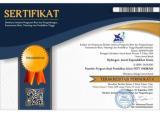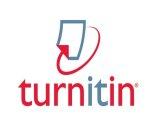Analysis of the Desorption Capacity of Pb2+ and Cu2+ Metals on Silica and Silica-Chitosan Adsorbents
DOI:
https://doi.org/10.33394/hjkk.v13i4.16781Keywords:
Silica, Silica-Chitosan, Desorption, Pb(II), Cu(II)Abstract
Studies have been conducted on the analysis of the desorption ability of Pb(II) and Cu(II) metals from silica and silica-chitosan adsorbents. This study aims to determine the desorption ability of Pb2+ and Cu2+ metals with variations in HCl concentrations using silica adsorbents and to determine the desorption ability of Pb2+ and Cu2+ metals with variations in HCl concentrations using silica-chitosan adsorbents. The parameters optimized in this study were concentration variations, namely 0.005 M, 0.01 M, and 0.02 M. The results of the study showed that silica adsorbents, Pb(II) metal desorption was best obtained at an HCl concentration of 0.02 M, which was 10.11%. Meanwhile, in silica adsorbents for Cu(II) metals, the best desorption was also obtained at an HCl concentration of 0.02 M, which is 0.0753%. In the silica-chitosan adsorbent, the best Pb(II) metal desorption was obtained at an HCl concentration of 0.01 M, which is 0.0298%, while the best desorption of Cu(II) metal was obtained at an HCl concentration of 0.01 M, which was 12.0684%
References
Hardyanti, I. S., Nurani, I., HP, D. S. H., Apriliani, E., & Wibowo, E. A. P. (2017). Pemanfaatan Silika (SiO2) dan Bentonit sebagai adsorben logam berat Fe pada limbah batik. JST (Jurnal Sains Terapan), 3(2).
La Harimu., La Rudi., Aceng, H., Giswa, A. P. S., & Asriyanti. (2019). Studi Variasi Konsentrasi NaOH dan H2SO4 untuk Memurnikan Silika dari Abu Sekam Padi Sebagai Adsorben Ion Logam Pb2+ dan Cu2+. Indo. Jurnal. Chem. 6(2).
Lestari, D. W., Rodiah, S., & Asnari, M. (2024). Pemanfaatan Kitosan Sebagai Adsorben Untuk Menurunkan Kadar Logam Tembaga (Cu), Besi (Fe), Dan Timbal (Pb). Phenomenon: Multidisciplinary Journal Of Sciences and Research, 2(01), 61-68.
Mulyasuryani, A., Rumhayati, B., & Cahyani, C. (2013). Adsorpsi Pb2+ dan Cu2+ Menggunakan Kitosan-Silika dari Abu Sekam Padi. Jurnal Kimia Valensi, 3(2).
Naat, J. N., Kefi, L. G., & Lawa, Y. 2021. pH dan Waktu Kontak Adsorpsi Ion Logam Cu (II) menggunakan Adsorben Silika yang Bersumber dari Pasir Alam Takari. Jurnal Beta Kimia. 1(1). 43-51.
Pohan, M. S. A. (2015). Studi Adsorpsi-Desorpsi Anion Fosfat, Sulfat Dan Nitrat Pada Zeolit Termodifikasi Ctab; Adsorption-Desorption Studies Of Phosphate, Sulphate, And Nitrate Anions On Ctab Modified Zeolite (Doctoral dissertation, Universitas Gadjah Mada).
Sudiarta, I.W. dan Sulihingtyas, W.D. 2012.Biosorpsi Cr (III) pada BiosorbenSerat Sabut Kelapa Hijau Termobilisasi EDTA.Jurnal Kimia. 6(1): 29 – 36.
Tanjung, A., Gonzales, R., Seprianti, A., & Izati, R. (2022). Analisis Pemanfaatan Limbah Terak Nikel (Slag) sebagai Bahan Baku Pembuatan Shotcrete dan Penanganan Limbah Lumpur Nikel (Slurry) untuk Mengurangi Dampak Pencemaran Lingkungan. Jurnal Migasian, 6(2), 11-22.
Yanti, D. R., & Oktavia, B. (2022). Desorpsi Nitrat (No3-) Dari Silika Gel Termodifikasi Dimetilamina (Dma) Menggunakan Eluen Asam. CHEDS: Journal of Chemistry, Education, and Science, 6(2), 82-89.
Zustriani, A. K. (2019). Desorpsi Ion Logam Besi (Fe) dan Tembaga (Cu) dari Adsorben Biji Pepaya dengan Larutan Pendesorpsi Asam dan Basa. Integrated Lab Journal, 7(2).
TH, S. R., Ramadhan, A. A., & Yasin, M. (2023). Analisis Struktur Komparatif Industri pada Perkembangan Industri. Jurnal Kajian dan Penelitian Umum, 1(3), 84-101.
Wardalia. (2016).Karakterisasi Pembuatan Adsprben dari Sekam Padi sebagai Pengadsorp Logam Timbal pada Limbah Cair. Jurusan Teknik Kimia, Universitas Sultan Ageng Tirtayasa, 83-88.
Ali, R. M., Hendrawati, T. Y., Ismiyati, I., & Fithriyah, N. H. (2020). Pengaruh jenis adsorben terhadap efektifitas penurunan kadar timbal limbah cair recycle aki bekas. Jurnal Teknologi, 12(1), 87-92.
Rahmi, R., & Sajidah, S. (2018). Pemanfaatan Adsorben Alami (Biosorben) Untuk Mengurangi Kadar Timbal (Pb) Dalam Limbah Cair. In Prosiding Seminar Nasional Biologi, Teknologi dan Kependidikan (Vol. 5, No. 1).
Sartifa, W. O., Harimu, L., & Mulyana, W. O. (2022). Variasi Konsentrasi Asam Klorida (HCl) dan Lama Perendaman Slag Nikel Dalam Proses Leaching Serta Variasi Volume NH4OH untuk Mengendapkan Besi (fe). Sains: Jurnal Kimia dan Pendidikan Kimia, 11(2), 84-89.
Putri, I. E.F., Aceng, H., & Harimu, L.(2021). Analisis Kemampuan Komposit Silika Slag Nikel dan Karbon Aktif untuk Menurunkan Kadar Fosfat. Jurnal Ilmu Kimia dan Pendidikan Kimia. 87-94.
Maslukah, L., Zainuri, M., Wirasatriya, A., & Widiaratih, R. (2020). Studi kinetika adsorpsi dan desorpsi ion fosfat (PO42-) di sedimen perairan Semarang dan Jepara. Jurnal Ilmu Dan Teknologi Kelautan Tropis, 12(2), 383-394.
Cyprianus, S., & Muzakky, M. (2010). Proses Desorpsi Logam Berat Pada Sedimen Sungai Daerah Muria Dengan Pelarut Asam. Ganendra Majalah IPTEK Nuklir, 13(1).
Published
How to Cite
Issue
Section
Citation Check
License
License and Publishing Agreement
In submitting the manuscript to the journal, the authors certify that:
- They are authorized by their co-authors to enter into these arrangements.
- The work described has not been formally published before, except in the form of an abstract or as part of a published lecture, review, thesis, or overlay journal.
- That it is not under consideration for publication elsewhere,
- That its publication has been approved by all the author(s) and by the responsible authorities – tacitly or explicitly – of the institutes where the work has been carried out.
- They secure the right to reproduce any material that has already been published or copyrighted elsewhere.
- They agree to the following license and publishing agreement.
Copyright
Authors who publish with Hydrogen: Jurnal Kependidikan Kimia agree to the following terms:
- Authors retain copyright and grant the journal right of first publication with the work simultaneously licensed under a Creative Commons Attribution License (CC BY-SA 4.0) that allows others to share the work with an acknowledgment of the work's authorship and initial publication in this journal.Â
- Authors are able to enter into separate, additional contractual arrangements for the non-exclusive distribution of the journal's published version of the work (e.g., post it to an institutional repository or publish it in a book), with an acknowledgment of its initial publication in this journal.
- Authors are permitted and encouraged to post their work online (e.g., in institutional repositories or on their website) prior to and during the submission process, as it can lead to productive exchanges, as well as earlier and greater citation of published work.
Licensing for Data Publication
Hydrogen: Jurnal Kependidikan Kimia uses a variety of waivers and licenses, that are specifically designed for and appropriate for the treatment of data: Open Data Commons Attribution License, http://www.opendatacommons.org/licenses/by/1.0/ (default) Other data publishing licenses may be allowed as exceptions (subject to approval by the editor on a case-by-case basis) and should be justified with a written statement from the author, which will be published with the article.






